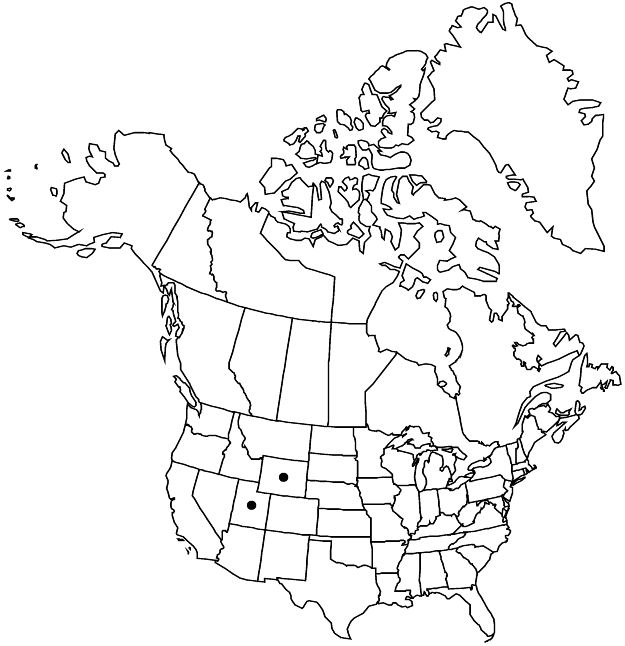Drymocallis deseretica
J. Bot. Res. Inst. Texas 1: 41, fig. 2. 2007.
Caudex branches short. Stems ± tufted, (1.5–) 2.5–6 (–6.5) dm; base 2–3 (–4) diam., sparsely to densely septate-glandular. Leaves sparsely hairy; basal (5–) 7–20 cm, leaflet pairs (2–) 3; terminal leaflet broadly obovate to rhombic, (1.5–) 2–4 × (1–) 1.5–3 cm, teeth single or double, 5–9 per side, apex acute to obtuse; cauline 1–2, well developed, leaflet pairs 2–3. Inflorescences 3–15 (–20) -flowered, leafy, ± compact, (1/6–) 1/5–1/3 (–1/2) of stem, narrow, branch angles 10–20°. Pedicels 2–15 (proximal to 20) mm, predominantly short-hairy, often velutinous, not or sparsely to moderately septate-glandular. Flowers opening widely; epicalyx bractlets linear to lanceolate or narrowly elliptic, (2.5–) 3–8 × 0.5–2 (–3) mm; sepals spreading, (5–) 6–12 (–15) mm, apex usually acute, sometimes obtuse; petals rarely overlapping, spreading, cream-white to light yellow, narrowly to broadly obovate, (4–) 6–10 × (2.5–) 3.5–6 (–7) mm, usually shorter than sepals; filaments 1–3 mm, anthers 0.8–1 mm; styles very thickened, 1 mm. Achenes light-brown, 1.2–1.5 mm.
Phenology: Flowering (May–)Jun–Sep.
Habitat: Openings among sagebrush, aspen, fir, and/or spruce forests, often where moist or rocky, below cliffs
Elevation: 2000–3300 m
Discussion
Drymocallis deseretica is common in the Wasatch and western Uintah mountains of northern and central Utah, where it has usually been treated as Potentilla glandulosa var. intermedia (= D. glabrata) or P. glandulosa var. pseudorupestris (= D. pseudorupestris var. saxicola). It differs from both taxa in its more compact inflorescences, predominantly short-hairy pedicels, and sepals that conspicuously enlarge in fruit, which create a distinctive aspect. Comparable plants with shorter, obtuse sepals occur in the Raft River Mountains; their optimal placement remains to be determined. Inclusion of Wyoming in the species range is based on Goodding 1993 (UT) from Bridger Peak, Carbon County. Drymocallis deseretica intergrades with D. glabrata to the north and D. arizonica to the south, with the exact range yet to be determined.
Selected References
None.
Lower Taxa
"thin" is not a number."dm" is not declared as a valid unit of measurement for this property."dm" is not declared as a valid unit of measurement for this property.
